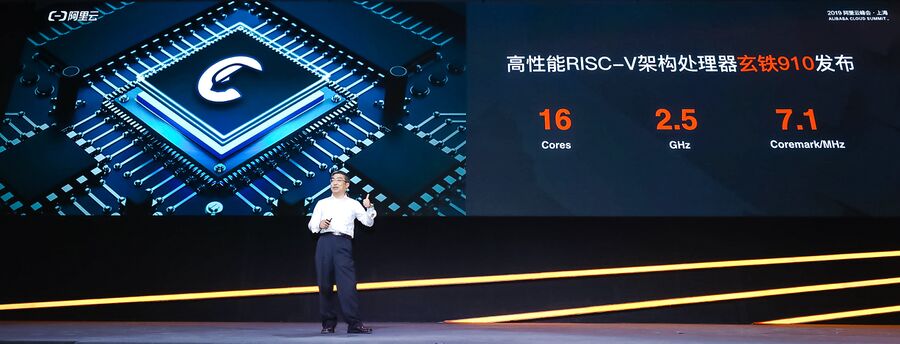Alibaba announces 16-core RISC-V chip and promises to make it Open Source
Chinese Alibaba started their Pingtouge 平头哥 chip subsidiary late 2018 due to concerns after the US announced a boycott of ZTE. The Xuan Tie 910 is their first chip. It is a 16 core RISC-V chip with a max boost frequency of 2.5 GHz. Pingtouge claims their RISC-V chip is 40% faster than the best currently available RISC-V chips.
As good as all current embedded SOCs as well as mobile phone SOCs use the ARM instruction set. ARM designs require a license which, as ARM recently demonstrated, could be revoked at any time for any or no reason. RISC-V is a completely free alternative which has the potential to replace ARM as the dominant standard for low-powered processors.
Pingtouge announced their first chip, the The Xuan Tie 910, on July 25th, 2019. Their story is that this 2.5 GHz 16-core RISC-V chip has a Coremark/MHz score of 7.1. That would be a horrible Coremark/MHz if it's all-core and a decent store if it's single-core. They do not clarify what the case may be.
The Xuan Tie 910 has "complex" out-of-order execution and it can access memory twice per clock cycle. Pingtouge claims it is suitable for a range of applications including artificial intelligence, network communications - including 5G and self-driving cars.
Pingtouge promised to "fully" open source the Xuan Tie 910 on https://github.com/T-head-Semi/wujian100_open. The FPGA code will be available for free and third parties are allowed to make their own SOCs based on it's design. Pingtouge will make reference SOC designs suitable for a range of "Internet of Things" devices available for free.
The Linux kernel has had RISC-V support for quite some time. It is quite possible that there will be simple Linux-capable thinker-boards similar to the Raspberry Pi based on the Xuan Tie 910 in the not too distant future.
Source: 平头哥发布RISC-V处理器玄铁910,高性能芯片成本降低一半

Enable comment auto-refresher
Rms
Permalink |
Anonymous (a57dbdef)
Anonymous (a57dbdef)